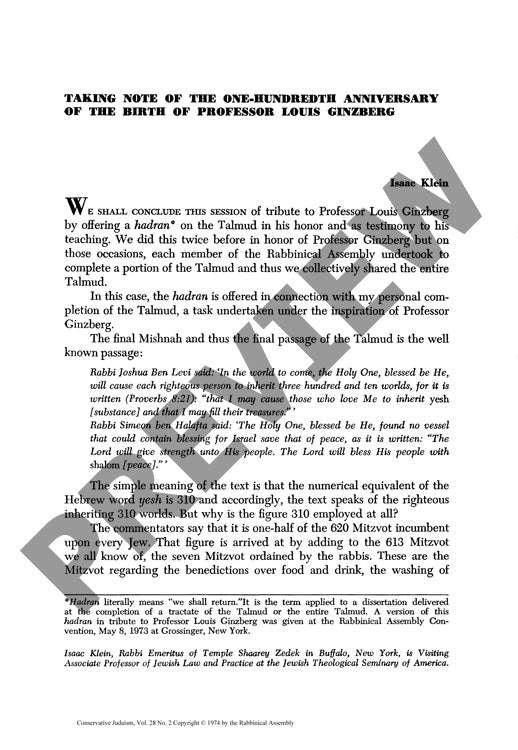Taking Note of the One Hundredth Anniver
Couldn't load pickup availability
The centennial of Louis Ginzberg's birth provides a compelling lens to examine the intricate structural and thematic connections between the Babylonian Talmud's opening and closing passages through a traditional hadran ceremony. By analyzing the final Mishnah's discussion of the 310 worlds inherited by the righteous and God's vessel of peace through Kabbalistic frameworks—particularly Luria's doctrine of shvurat kelim—deeper patterns emerge in the text's architectural design. The numerical symbolism of 310 represents precisely half of the 620 mitzvot, revealing how divine grace and ancestral merit complement righteous deeds. Similarly, the alphabetic structure linking the Talmud's beginning (meaymatai) and ending (shalom), both commencing with mem, suggests an intentional continuity between written and oral Torah. This homiletical interpretation reveals how the opening emphasis on the Shema prayer establishes God's fundamental unity, while the conclusion elevates peace beyond mere conflict absence to true wholeness. Through an integration of traditional rabbinic commentary and mystical interpretation, the Talmud's internal coherence and pedagogical structure demonstrate how seemingly dissenting scholarly opinions contribute to comprehensive theological understanding.

More Information
-
Physical Description
-
Publication Information
Published 1974
ISBN
-
Publication Credits
Isaac Klein

